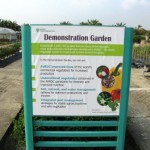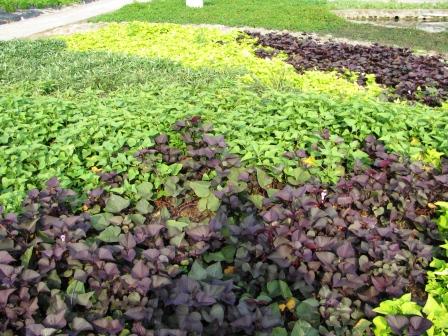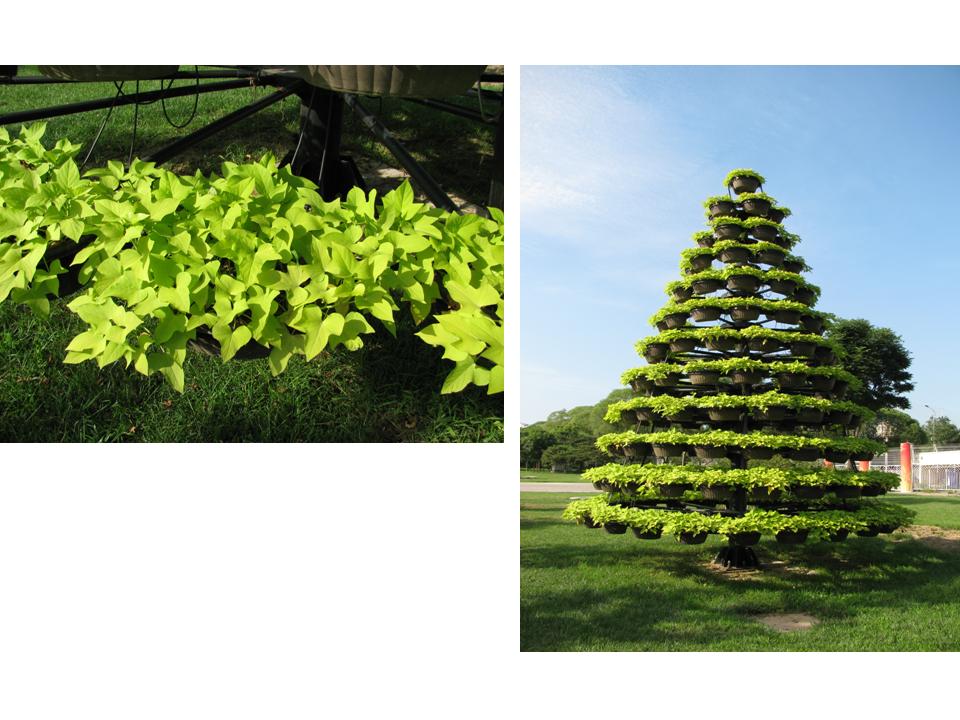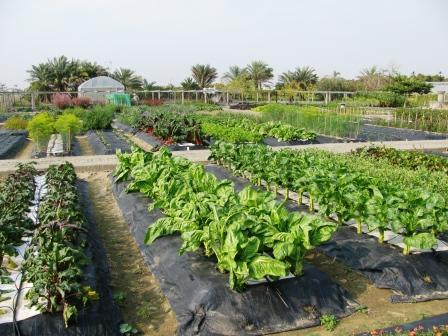- Conserving dambos for livelihoods in southern Africa. How many CWRs are found in such wetland habitats around the world, I wonder.
- Cucumis not out of Africa.
- Exploring “the connection between traditional knowledge of herbs, edible and medicinal plants and media networked culture.” And why not.
- PBS video on malnutrition.
- Fungal exhibition at RBG Edinburgh.
- Indian Council on Agricultural Research framing guidelines for private-public partnerships in seed sector. That’ll stop the GM seed pirates.
- Conserve African humpless cattle! They’re needed for breeding.
- UG99 — and crop wild relatives — in the news. The proper news. The one people pay attention to.
- Vanilla lovers better start stocking up.
- Kenyan farmers earning money selling sorghum to brewers. What’s not to like.
Potatoes in the limelight
It’s potato season at the US Botanical Garden, it seems. There’s a temporary exhibit on the spud. And a number of talks between now and the end of the month, including one on the USDA Potato Genebank. I know because Smithsonian Magazine posted this video on Facebook.
Needless to say, if any of our readers go, we’d love to hear about it.
AVRDC’s treasure trove of diversity
I was recently at AVRDC headquarters in Taiwan and was quite taken with their demonstration garden. (Among other things. The genebank operation is also impressive, and recovering from a recent unfortunate setback.) It’s a wonderful display of both vegetable diversity and cultivation systems. I was going to blog about it, but then life intervened, or at least work did. Anyway, the latest issue of AVRDC’s newsletter has a piece on the garden, and they have kindly agreed for us to reprint it here, as the newsletter itself is not available online. Which kinda gets me off the hook. The photographs are mine. The following text (and this post’s title) are courtesy of AVRDC.
Although there are thousands of plants people can consume, humanity relies on only a relative handful for food. Indigenous vegetables — whether semi-wild or domesticated — can greatly expand the menu. Grown primarily in their centers of origin or introduced in a given area, indigenous or traditional vegetables provide food in times of scarcity for the world’s poorest people, yet these hardy, nutritious species often are underutilized.

What began in 2001 as an experimental field on the grounds of the AVRDC headquarters campus in Shanhua, Taiwan has blossomed into a 0.63-hectare living example of the mission and work of AVRDC — The World Vegetable Center.
“The Demonstration Garden was designed as an observation plot for indigenous vegetables when we got the project from the Taiwan Council of Agriculture in the beginning,” said Mandy Lin, an assistant specialist in AVRDC Global Technology Dissemination. After 10 years of development, more than 60 different species of indigenous vegetables are cultivated in 200 plots of various sizes and shapes to showcase the special qualities of each species and promote their wider use. The range of species grown also maintains visual interest as the seasons change.
The indigenous vegetables in the garden were selected for three significant characteristics—ease of cultivation (low input), nutritional quality, and resistance to pests and diseases. Visitors touring the Demonstration Garden often are surprised by the number and variety of indigenous vegetables, and the different edible parts, from shoots and leaves to pods and seeds. “We want to convey a simple but principal message to every visitor—that a diverse diet including many different vegetables is beneficial to health,” Mandy said.
In July 2008 the Center’s Global Technology Dissemination group expanded the function of the Demonstration Garden to highlight four major mature technologies: low-cost drip irrigation, starter solution, grafting chambers, and protective shelters. Farmers in developing countries can adopt these technologies to increase yields, improve produce quality, and reduce production costs.

Visitors and AVRDC staff members alike gain new ideas and inspiration as they walk through the garden, enjoy the rich diversity of plants, and see farming technologies in use. As Mandy observed: “You think you are taking care of crops, but in fact they educate you with their beauty and variety.”
Nibbles: Danone, Street food, Makutano Junction, Canberra, Africa, Markets, Veggies
- Let them eat yoghurt. Danone targets the poor. h/t Tom
- Eating Mexico City, one street at a time. Bookmarked.
- It’s The Archers, Jim, but not as we know it. Soaps spread (agro)innovation.
- The Crawford Fund Conference does biodiversity (in Australia)
- New Agriculturist reports on a discussion of development in Africa. Is anybody listening?
- Food markets freed! A little. In one US state.
- Local leafy greens all the rage in Kenya. Yeah, yeah. No but seriously, one of the great changes in the past 10 years, and a major agrobiodiversity success story.
A sweet potato Christmas tree in Beijing
Maybe someone out there can help me out with this. I was walking along a main thoroughfare towards the Bird’s Nest Stadium in Beijing and came across on the grass verge a construction consisting of tubs of what I believe may be sweet potato plants craftily arranged on a metal framework in the general shape of a Christmas tree. Here it is below (click on it to enlarge). Can somebody explain the point? Is this vegetative cone merely decorative, or do the plants have symbolic value? Are they in fact sweet potatoes?
Can somebody explain the point? Is this vegetative cone merely decorative, or do the plants have symbolic value? Are they in fact sweet potatoes?
